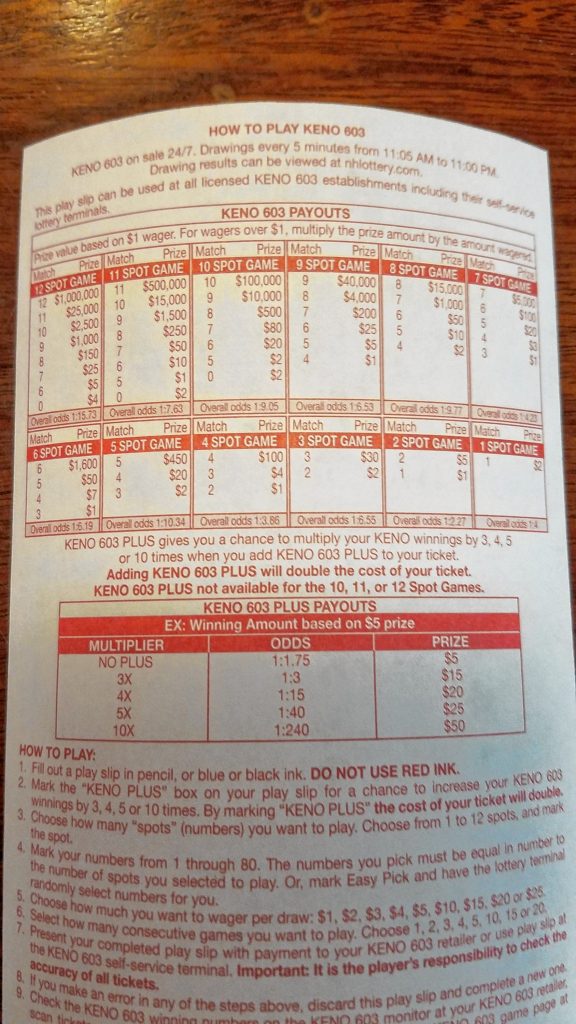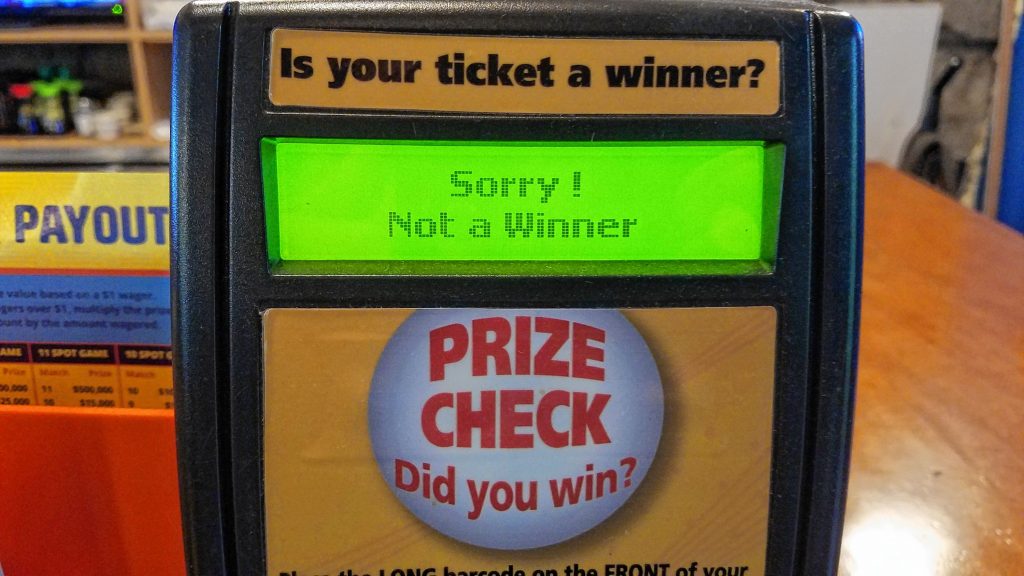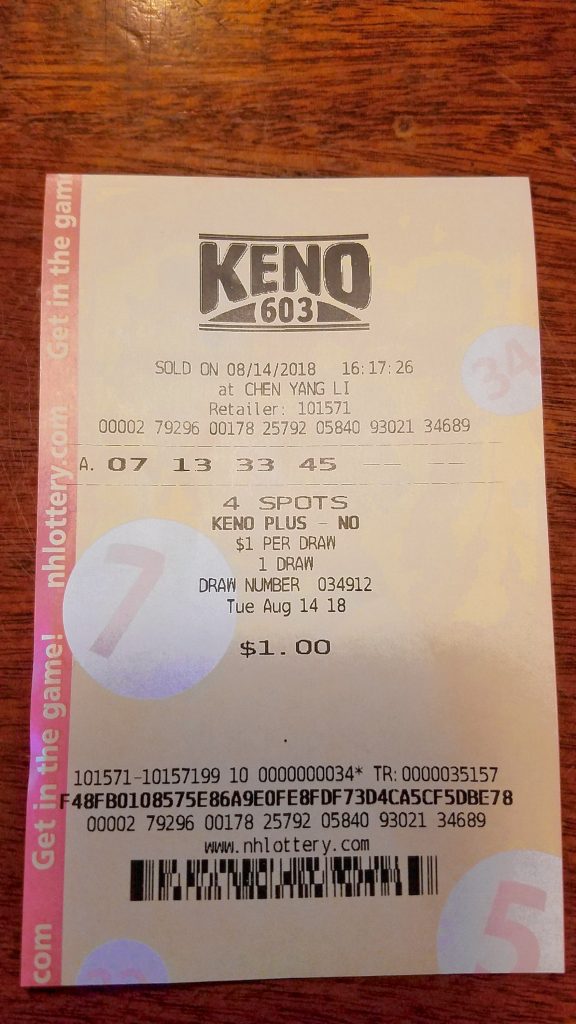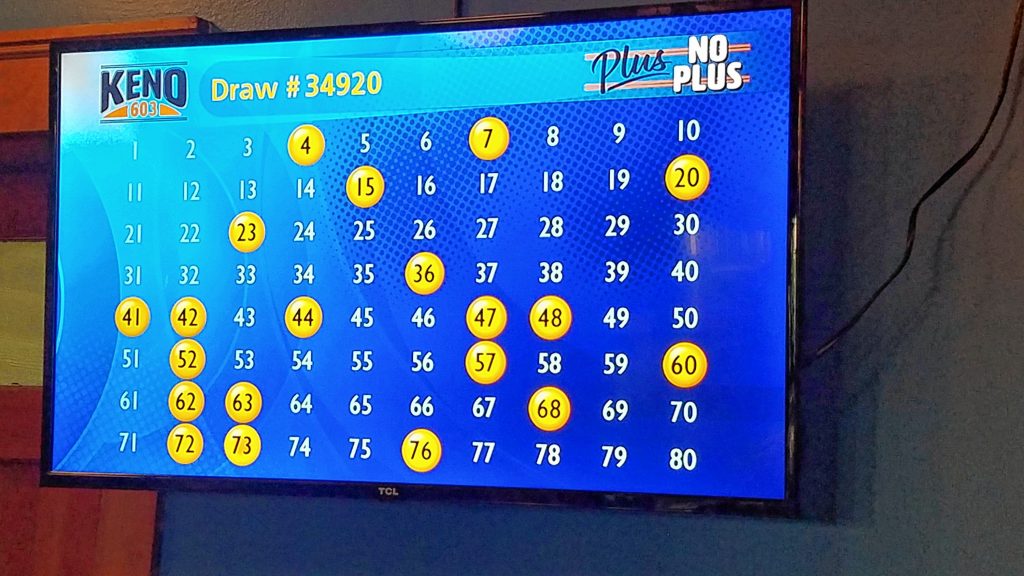I grew up in Massachusetts, and keno was always everywhere – coffee shops, bars, restaurants, even a lot of convenience stores. That’s why I found it very odd that the Live Free or Die State, the one where government-run lottery itself was born (Puerto Rico was the first to launch a government-run lottery, but that’s not a state), had not allowed the game until pretty recently. Even still, it is not available statewide – each city or town must decide on its own whether to allow the game.
Thankfully, Bow has approved the game, and Chen Yang Li has it up and running now.
Since 25 percent of lottery proceeds go to support public education in New Hampshire – and since this is the Back to School Issue – we thought we’d do our civic duty by chipping into the education fund by playing a few rounds of keno. Plus, maybe we’d even win a million bucks or something – there’s always a chance.
For those who have never played keno, the rules are pretty simple. All you do is choose how many “spots” you want to play, choose how much you want to bet on it, decide whether you want to add the multiplier and sit back and watch the numbers.
Every 5 minutes, 20 numbers between 1 and 80 are drawn and displayed on a number of TV screens around the bar – at Chen Yang Li, the keno is in the downstairs lounge, and we counted two TVs showing the drawings. Those “spots” we mentioned refer to how many numbers you want to play – you can choose a 1-spot game all the way up to a 12-spot game.
Until recently, the selection process had to be done by hand using paper slips. While the slips still exist and can be used at Chen Yang Li, there’s also a self-serve machine that allows for quick picks, which can save a lot of time. It’s also easier than trying to get the bartender’s attention on a busy night. The self-serve kiosk also allows you to check to see if you’ve won.
The back of the paper slips contain the payout and odds information for each of the games – 1-spot through 12-spot. We started out with a 4-spot game, which has overall odds of winning of 1:3.86, and pays $1 if you get two numbers, $4 if you get three and a cool $100 if you go four for four (payouts are based on a $1 bet with no multiplier).
We chose our own numbers for this game – 7 (lucky), 13 (unlucky, to balance it out), 33 (Larry Bird) and 45 (Pedro Martinez). After all 20 numbers were drawn, we had only hit one – 7. Better luck next time.
We tried again, this time with a 2-spot game, which has overall odds of 1:2.27, easily the best odds out of all of the games, and pays a dollar for getting one and $5 for getting both. We picked our own again – 5 (Nomar Garciaparra) and 66 (just because, I guess). As luck would have it, we hit on No. 5 (how fitting) and won our dollar back. So, naturally, we let it ride and used the winnings to get another ticket, this time a big 12-spot, which comes with the allure of a $1 million payout off a dollar bet. It also has long overall odds of winning at 1:15.73.
We did a quick pick on this ticket to save time. The numbers were actually drawn before we even realized it, so we scanned the ticket under the prize check machine conveniently located right on the bar to see if we just hit the jackpot. “Sorry! Not a Winner” was the message. Go figure. You can also go to nhlottery.com to see which numbers were drawn for which games if you happened to miss a drawing.
Ultimately, we played six $1 rounds and spent $5, factoring in that $1 we won back. We never opted for the multiplier, which doubles the cost of the ticket, but in many cases there isn’t even a multiplier (Keno Plus, as they call it) to be applied.
If you like taking chances, winning money and just playing games, give keno a try at Chen Yang Li.












